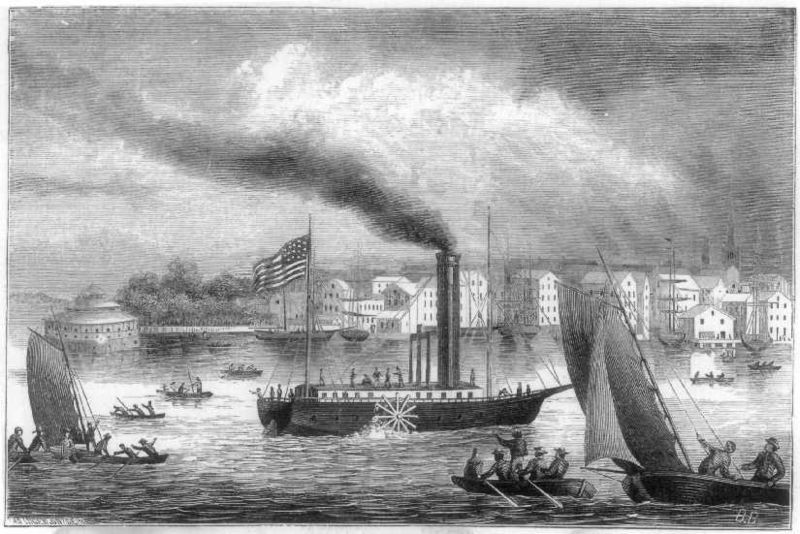Introduction to Coal | Coal as a Fuel|Coal Affects History| Coal Mining and Effects| Environmental Effects| History Affects Coal|References|
Industrial Revolution
As previously mentioned, coal played a pivotal role in the industrial revolution as fuel for the steam engine that was driving the movement. However, beyond its role as a fuel coal also had a tremendous impact on the global economy, politics, and foreign relations during the era of the industrial revolution.
Britain’s abundant supply of coal is the reason that it became the first industrial power. After the invention of the steam engine Britain’s abundant supply of coal allowed it the resources to set up factories and begin the process of industrialization. Many other nations, such as the United States, also benefited from their vast coal resources and were quick to industrialize. However, for other nations shortages in coal resources proved a significant obstacle to industrialization of infrastructure and modernization of their economy. This impacted the balance of power among the imperialist nations of the world. Nations that were able to industrialize were able to produce goods and, perhaps more importantly, munitions faster than their peers. This gave Britain, the United States, and other nations a decided military advantage against unindustrialized opponents. Improvements in the production and quality of arms as a result of the steam engine and the industrial revolution help account for the expansion and maintenance of the British Empire as well as the high casualty rates in the U.S. Civil War.
However, the eagerness of unindustrialized countries to catch up with Britian opened up a lucrative market in trading coal. This market still exists today as many countries import coal as a (as previously mentioned) inexpensive fuel source for power plants. In contemporary times the two largest producers of coal are the United States and Australia. The two exported a combined 308 million tons of coal in 2005.
In the early 19th century coal fueled the newly invented steam boat and steam locomotive. The steam locomotive in particular revolutionized transportation. Both the steam engine and boat were powered by a steam engine similar to the one powering Britain’s factories. The steam engine allowed for faster and cheaper transportation of goods from one point to another. It was both faster and stronger (could lug more carts) then previous models of train engines. Ironically, the first material to benefit from the new mode of transportation was coal. Steam locomotives transported coal from the mines to rivers (and later canals) where the valuable commodity was shipped to factories.
In the present day, coal is still being used to improve transportation. As previously mentioned, scientists have successfully created a liquid fuel via liquefaction that can be used to power automobiles. It is being investigated as a cheap alternative to less abundant petroleum. Unfortunately, an affordable process of making the liquid fuel environmentally friendly has not yet been discovered.
In the United States Santa Claus stuffs coal in the stockings of naughty children. However, in Scotland coal is a traditional New Year’s gift and represents warmth in the year to come.



